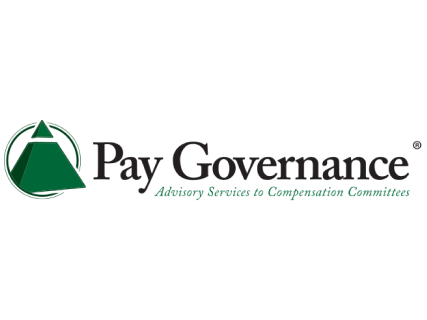
Pay Governance Consumer Private Dinner
Archive

NACD Northern California
Contact Us
Lisa Spivey,
Executive Director
Kate Azima,
Director of Partnerships & Marketing
programs@northerncalifornia.nacdonline.org
Find a Chapter
About The Event
NACD Northern California consumer-focused directors were invited to join us for a private dinner around the topic of executive and board compensation. The evening was full of rich insights from our directors and our partners from Pay Governance— Brian Lane, Marizu Madu, and Tara Tays who also kindly hosted the dinner. Please find the key takeaways and questions to ask in your next board meeting below.
Executive CEO Trends
For more details, refer to Pay Governance’s S&P 500 CEO Compensation Trends ViewPoint.
-
Although S&P 500 companies’ total shareholder return rebounded more than 26 percent in 2023, actual bonuses paid in 2024 will likely be down from those paid in 2023 (with variations by industry).
-
In 2024, given continued uncertainty in the economy, CEO actual and target total direct compensation is expected to increase in the low single digits.
-
Performance-based equity remains the most common long-term incentives vehicle (95 percent); restricted stock units have held relatively steady around 70 percent prevalence, and stock options have continued their decline among large companies (to 45 percent).
-
Companies should consider adapting their performance metrics to align with the company’s growth stage; strategy and the design hold executives accountable for long-term value creation.
-
Assessments that can be conducted to evaluate the effectiveness of executive compensation programs include:
-
Pay for performance—measure target pay levels compared to stock price performance over one and three years
-
Realizable pay—analyze actual pay delivered against key financial results
-
Wealth creation—measure actual and potential equity wealth provided to executives based on various stock-price scenarios
-
Board of Director Compensation Trends
For more details, refer to Pay Governance’s S&P 500 Board of Directors Compensation Trends ViewPoint.
-
Over the last three years, median S&P 500 pay level increases for non-employee directors have been limited, with total cash compensation (cash retainers plus meeting fees) remaining flat, annual equity grant values up more than 3 percent, and total pay (sum of cash plus equity) up more than 1 percent.
-
Premiums for both nonexecutive board chair roles and lead director roles have also increased in prevalence and quantum since 2015, potentially indicating an increased emphasis of these roles on corporate governance matters.
-
Seventy percent of S&P 500 companies have established director pay limits within their shareholder-approved equity plans with a median value of $750,000.
-
Companies should 1) regularly review and align board director compensation with corporate responsibilities and market practice (every other year at least) and 2) assess board activity and committee hours to determine if pay should be differentiated by committee (instead of solely relying on market data).
Compensation Philosophy Transitions Led by the CEO
-
Manage CEO-led transitions in executive compensation program changes by performing a gap analysis on how the proposed program compares to market practice (both core peer companies and any supplemental frames of reference), internal business and talent objectives, and investor preferences.
-
Evaluation should also include stakeholder interviews to further ensure the program changes will continue to motivate and retain key talent.
Compensation Actions in a Volatile Market
-
It’s good practice to periodically review the status of outstanding equity (e.g., aggregate value, vested and unvested percentages, remaining retentive power, likelihood of future performance vesting tranches, etc.); this is particularly true in volatile times.
-
During sharp declines in stock price, review and assess:
-
intended equity grant date value vs. current equity value
-
long-term incentives grant guideline strategy (e.g., continue to grant based on grant date fair value or move to fixed shares based on affordability and/or type of equity used to deliver value)
-
need to grant one-time retention awards
-
overall employee participation level
-
Peer Group Comparisons
-
Regularly assess peer companies to ensure alignment with your company’s market for talent, business competitors, and financial size.
-
If applicable, expand your selection criteria beyond standards of industry and size to include other key company characteristics.
-
Consider utilizing a supplemental peer group of high-performing companies and/or industry disruptors to understand the pay levels and designs used to attract, retain, and motivate talent.
Role of the Compensation Committee
-
The committee role has been expanding into broader human capital areas, especially in light of the US Securities and Exchange Commission’s Investor Advisory Committee’s suggestion that a “growing body of work provides evidence that companies with effective human capital management perform better than those that manage their human capital poorly.”
-
Compensation committees should be empowered to balance executive pay decisions with broader employee pay decisions (e.g., merit, bonus multipliers, and equity pool increase and decrease) and factor other human capital (e.g., employee career development, training, safety, and mental health) and operational objectives.
-
It’s important to encourage executives to invest in career-progression and succession-planning frameworks to ensure high retention of the best talent and create long-term stability; the committee has become more active in these areas.
-
Best practices for working relations between compensation committees and their independent advisor should include:
-
open communication and a no-surprise policy
-
pre- and post-briefing meeting with the chair
-
sufficient time to review advisor committee materials (one to two weeks before meeting)
-
explanation of the pros and cons and/or lessons learned regarding incentive-design practices and pay-level decisions
-
anticipation of shareholder reactions to committee executive pay-level and design decisions.
Best Practices for Shareholder Engagement
-
Foster regular dialogue with the top 25 percent of institutional investors to discuss alignment between company strategy and executive compensation program and to understand investor preferences.
-
Outreach meetings should include members of management (chief human resources officer, general counsel, chief financial officer, etc.), the compensation committee chair, and/or the lead director or board chair; management should prepare a briefing document that summarizes the institution’s proxy voting guidelines.
-
Engages with Institutional Shareholder Services Inc. (ISS) and Glass Lewis & Co. (within reason) to understand their views on the company’s executive compensation program and make sure the firms are interpreting the company’s program correctly.
-
The company’s proxy statement should include a section on shareholder outreach and disclose the number of investors the company reached out to and holding power representation, percent of investors the company actually met with, summary of investor feedback, and what the company has done or will do to address investor concerns (if any).
Compensation Questions for Your Next Board Meeting
-
How robust are our company’s leadership-development and succession-planning processes? And does the compensation committee feel sufficiently informed and engaged on these fronts?
-
What processes do we have in place to assess whether our executive compensation programs are effective and working as intended?
-
Is the company’s strategy adequately incorporated into short- and long-term incentive programs? Are the incentive-plan goals rigorous, attainable but sufficiently challenging, and appropriately reflective of current environment- and company-specific circumstances?
-
Do we have design features or governance processes available to us, if needed, to navigate significant volatility in share price or financial performance within our compensation programs? Relatedly, what is our approach and policy with respect to handling performance or incentive goal adjustments?
-
Are there compensation governance areas that should be updated to ensure we are fair and reasonable (e.g., “once in compliance, always in compliance” stock ownership guideline provision or voluntary deferred restricted stock units)?
Thank you to our generous sponsor for hosting this event:

NACD Northern California
Contact Us
Lisa Spivey,
Executive Director
Kate Azima,
Director of Partnerships & Marketing
programs@northerncalifornia.nacdonline.org
Find a Chapter
By registering for an NACD or NACD Chapter Network event, you agree to the following Code of Conduct.
| NACD and the NACD Chapter Network organizations (NACD) are non-partisan, nonprofit organizations dedicated to providing directors with the opportunity to discuss timely governance oversight practices. The views of the speakers and audience are their own and do not necessarily reflect the views of NACD. |